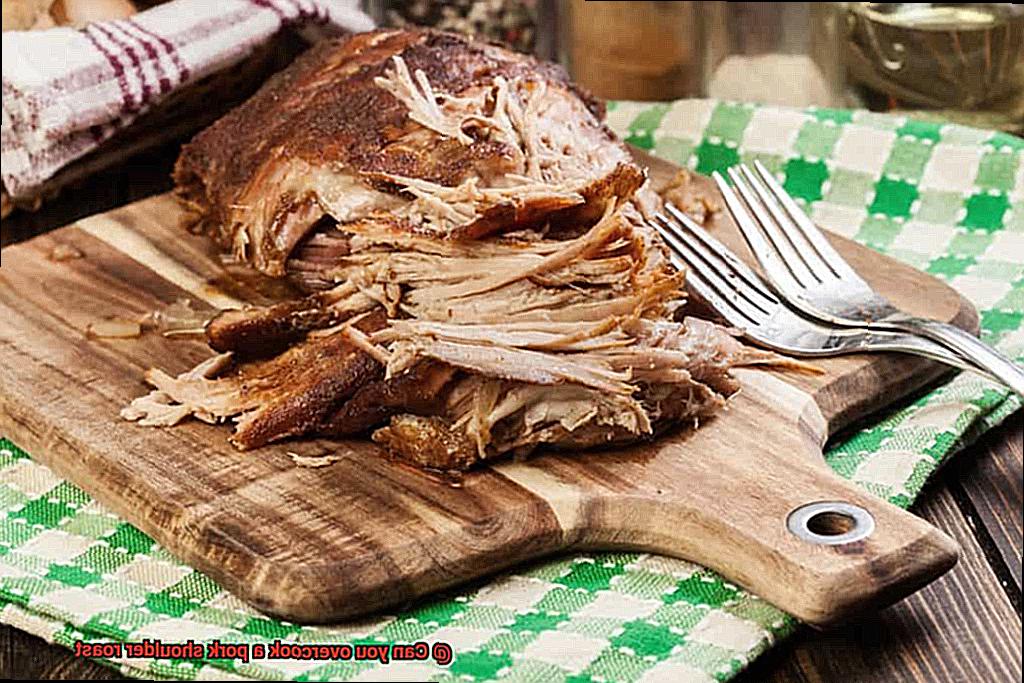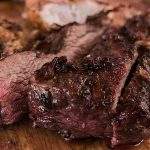Are you getting ready to impress your friends and family with a succulent pork shoulder roast? If so, you might be feeling the pressure of making sure it’s cooked to perfection. Pork is notorious for being tricky to cook due to its high fat content, leaving many wondering if overcooking it could ruin the entire meal. But can you really overcook a pork shoulder roast? Buckle up, because I’m here to share my expertise on this topic.
As an expert, I’ve heard countless horror stories about overcooked pork. Some say it becomes dry, tough, and tasteless, while others claim it turns into a chewy and rubbery mess. But before you throw in the towel and order takeout instead, let’s dive into the science behind cooking pork shoulder roast.
In this blog post, we’ll explore whether or not it’s possible to overcook a pork shoulder roast and what happens when you do. We’ll also discuss how to avoid overcooking by revealing the ideal cooking time and temperature for pork shoulder roast. Whether you’re a beginner cook or a seasoned pro looking for new tips and tricks, keep reading to learn how to create a perfectly juicy, tender, and flavorful pork shoulder roast every time.
Contents
What is Pork Shoulder?
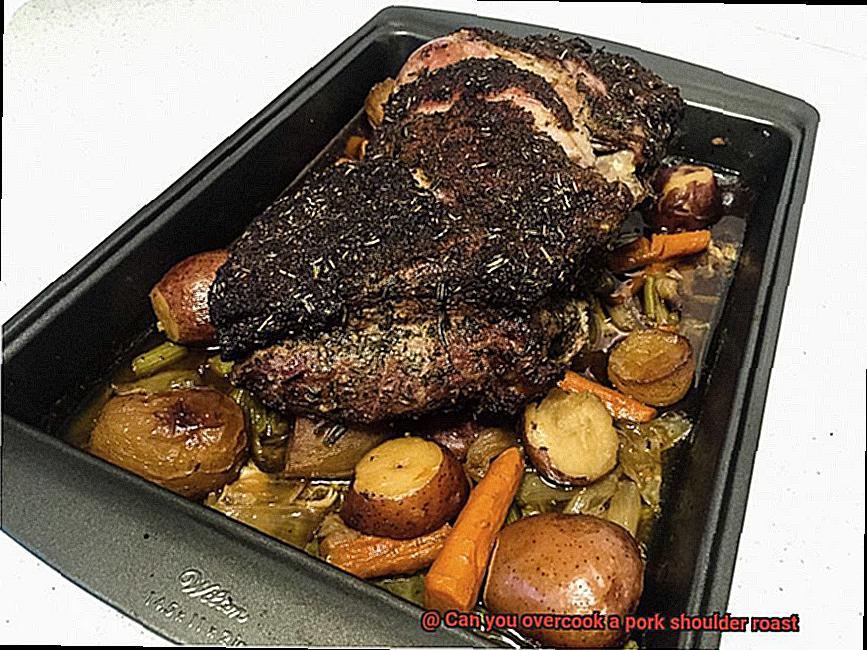
Pork shoulder, also known as pork butt or Boston butt, is a tantalizing cut of meat that comes from the upper portion of the front leg of a pig. This well-marbled cut contains a lot of connective tissue and fat, which makes it ideal for slow cooking methods like roasting or braising.
One of the most popular ways to cook pork shoulder is to create succulent pulled pork. This involves cooking the meat low and slow until it becomes fall-apart tender, then shredding it with a fork. Pulled pork can be served on its own, or as a filling for sandwiches or tacos.
If you prefer a more traditional approach, pork shoulder can also be roasted in the oven or cooked in a slow cooker with vegetables and seasonings. When selecting your pork shoulder roast, look for a good balance of meat and fat to ensure that it stays moist and tender during cooking. A bone-in roast will add even more flavor, but boneless roasts are also an option.
It’s important to note that pork shoulder is a tough cut of meat that requires slow, low-temperature cooking to break down the connective tissue and make it tender. Overcooking can result in dry and stringy meat. The optimal internal temperature for pork shoulder is around 195°F, allowing the connective tissue to break down without drying out the meat. However, cooking times can vary depending on the size of the roast and the cooking method used.
To avoid overcooking your pork shoulder roast, use a meat thermometer to keep an eye on the internal temperature. Once it reaches around 185°F-190°F, start checking it more frequently to prevent overcooking. You can also use a timer to help ensure that you don’t forget about your roast in the oven or slow cooker.
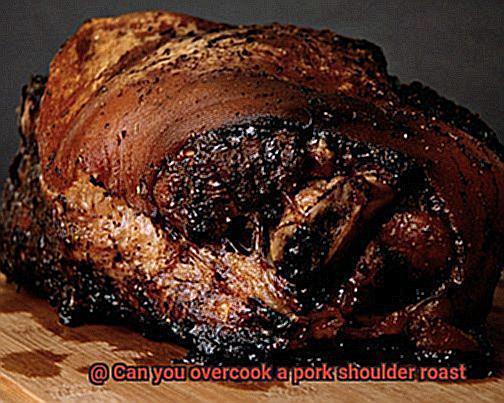
In addition to making pulled pork and roasts, pork shoulder can be used in stews and soups, ground for burgers and sausages, or sliced thin for stir-fry dishes. It’s a versatile and affordable cut of meat that can be found at most grocery stores and butcher shops.
Can You Overcook a Pork Shoulder Roast?
If you are, it’s essential to understand that overcooking this flavorful cut of meat can result in dry and tough meat that is difficult to chew. As an expert in the field, I can confidently tell you that the answer to the question “Can You Overcook a Pork Shoulder Roast?” is a resounding yes. But don’t worry, I’ve got some great tips and tricks to ensure your pork shoulder roast is cooked to perfection every time.
To start, it’s crucial to keep a close eye on the internal temperature of the meat. The USDA recommends cooking pork to an internal temperature of 145°F (63°C) followed by a three-minute rest time before carving or consuming. This temperature will ensure that the meat is safe to eat while still maintaining its juiciness and tenderness.
If you prefer your pork roast cooked to a higher temperature, it’s vital to monitor the internal temperature closely and avoid overcooking the meat. One way you can do this is by using a meat thermometer to check the temperature of the meat throughout the cooking process. This will allow you to adjust the cooking time or temperature as needed to prevent overcooking.
Aside from monitoring the temperature, there are other steps you can take to prevent overcooking your pork shoulder roast. One great technique is to use a cooking method that retains moisture in the meat, such as slow cooking or braising.
These methods involve cooking the meat in liquid for an extended period of time, which helps keep it moist and juicy while infusing it with delicious flavors from the liquid.
What Happens When You Overcook a Pork Shoulder Roast?
When the meat is overcooked, the proteins in the meat contract and squeeze out all the juices, leaving it dry and rubbery. The fat in the meat can break down and become greasy, making the roast taste unpleasantly oily. Plus, the exterior can become burnt or charred, giving it a bitter taste. No one wants to eat dry, tough meat with no flavor.
But fear not. There are ways to prevent overcooking from happening in the first place. One of the most effective ways is to use a meat thermometer. Simply insert it into the thickest part of the meat and ensure that it reads between 145°F to 160°F. This will guarantee that your roast is cooked through without being overdone.
Another way to prevent overcooking is by using a slow cooker or sous vide machine. These methods cook the meat at low temperatures for an extended period, ensuring that it stays moist and tender. Additionally, marinating or brining your meat before cooking can help keep it moist while also adding flavor.
Unfortunately, once your pork shoulder roast has reached a certain level of overcooking, there’s no going back. So it’s crucial to take preventative measures to avoid dry and tough meat.
What is the Optimal Internal Temperature for Pork Shoulder?
The secret to achieving perfectly cooked and tender pork shoulder is all about the optimal internal temperature. While the USDA recommends cooking pork to an internal temperature of 145°F (63°C) with a three-minute rest time, the optimal internal temperature for pork shoulder is slightly higher. So, what is the magic number?
For pulled pork, which is often made from pork shoulder, the optimal internal temperature range is from 195°F to 205°F (91°C to 96°C). This temperature range takes into account the fact that pork shoulder contains a lot of connective tissue and collagen. These fibers require a higher temperature and longer cooking time to break down and become tender, resulting in melt-in-your-mouth meat.
Now, you may be wondering why such a high temperature is necessary. The answer lies in the science of cooking. The collagen in the pork shoulder begins to dissolve at around 160°F (71°C) and continues to break down until it reaches around 205°F (96°C). This process creates a chemical reaction that transforms tough fibers into tender, flavorful meat.
To ensure that your pork shoulder reaches the optimal internal temperature, it’s crucial to use a meat thermometer. Cooking times and temperatures can vary depending on the size of your pork shoulder and cooking method used, so monitoring it closely is essential.
In addition to cooking your pork shoulder at the right temperature, there are other tips and tricks you can use to ensure that it comes out moist and delicious. Marinating or brining your meat before cooking can help enhance its flavor and keep it juicy. Using a slow cooker or sous vide machine can also help maintain a consistent temperature and prevent overcooking.
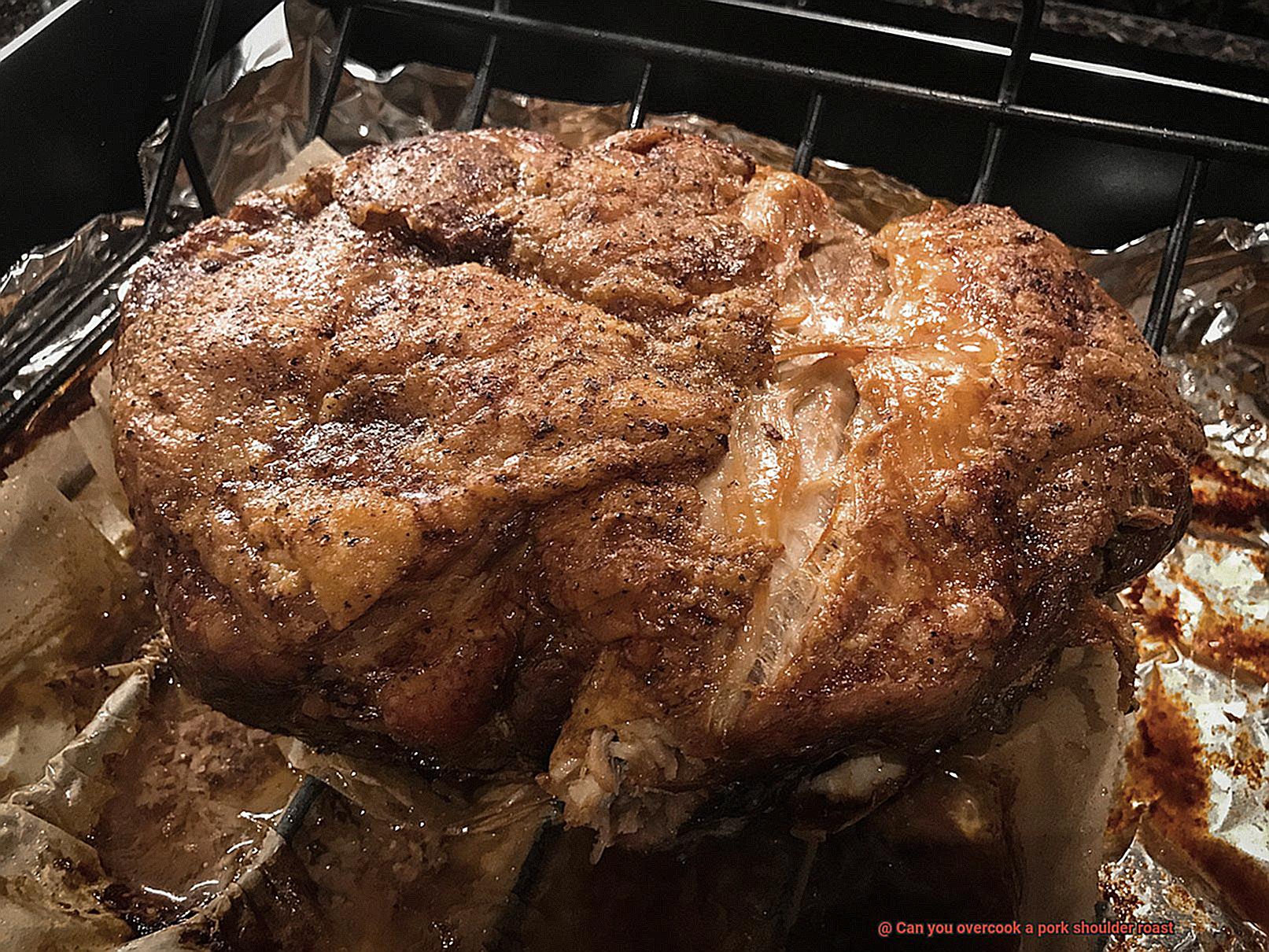
So, here are some key takeaways:
- The optimal internal temperature for pulled pork made from pork shoulder is between 195°F to 205°F (91°C to 96°C).
- Pork shoulder contains a lot of connective tissue and collagen, which requires a higher temperature and longer cooking time to break down and become tender.
- Use a meat thermometer to monitor the internal temperature of your pork shoulder during the cooking process.
- Marinating or brining your meat and using a slow cooker or sous vide machine can also help enhance flavor and maintain a consistent temperature.
How Long Does it Take to Cook a Pork Shoulder Roast?
Well, you’re in luck. As an expert on this topic, I’m here to guide you through the ins and outs of cooking the perfect pork shoulder roast.
The cooking time of a pork shoulder roast is determined by several factors such as size, thickness, cooking method, and desired level of doneness. Let’s delve into each of these factors.
- Size and Thickness: The larger and thicker the roast, the longer it will take to cook. To determine the cooking time of your pork shoulder roast, follow a general rule of thumb to cook it for 25-30 minutes per pound at 350°F (175°C). For instance, if you have a 4-pound pork shoulder roast, it will take roughly 2 to 2.5 hours to cook.
- Cooking Method: There are various ways to cook a pork shoulder roast, such as roasting in the oven, grilling, smoking, or using a slow cooker or crockpot. Your preferred cooking method will affect the overall cooking time. Using a slow cooker or crockpot might take up to 8 hours to cook a pork shoulder roast compared to roasting it in the oven, which may only take 3-4 hours.
- Desired Level of Doneness: The internal temperature of the pork shoulder roast is essential in determining its doneness. According to USDA guidelines, pork should be cooked to an internal temperature of 145°F (63°C) for safety reasons. However, for a tender and juicy pork shoulder roast that falls apart easily, aim for an internal temperature of 195°F to 205°F (91°C to 96°C). A meat thermometer is your best friend in checking the temperature. Once it reaches your desired level of doneness, remove the roast from heat.
It’s noteworthy that pork shoulder roast is less likely to become overcooked than other cuts of meat. Its connective tissue and fat content can handle longer cooking times without drying out the meat. However, overcooking can still result in dry and stringy meat, so keep an eye on the internal temperature and remove the roast from heat when it’s fully cooked but still moist and tender.
Tips to Prevent Overcooking a Pork Shoulder Roast
Overcooking is a common issue when it comes to this cut of meat, but fear not. With these five simple tips, you can prevent overcooking and achieve a juicy, tender roast every time.
Use a meat thermometer
The internal temperature of the pork shoulder roast is crucial for determining when it is fully cooked. Using a meat thermometer will help you monitor the temperature and ensure that it reaches the optimal temperature of 190-195°F without overcooking it. Make sure to insert the thermometer into the thickest part of the meat without touching the bone.
Use a slow cooker
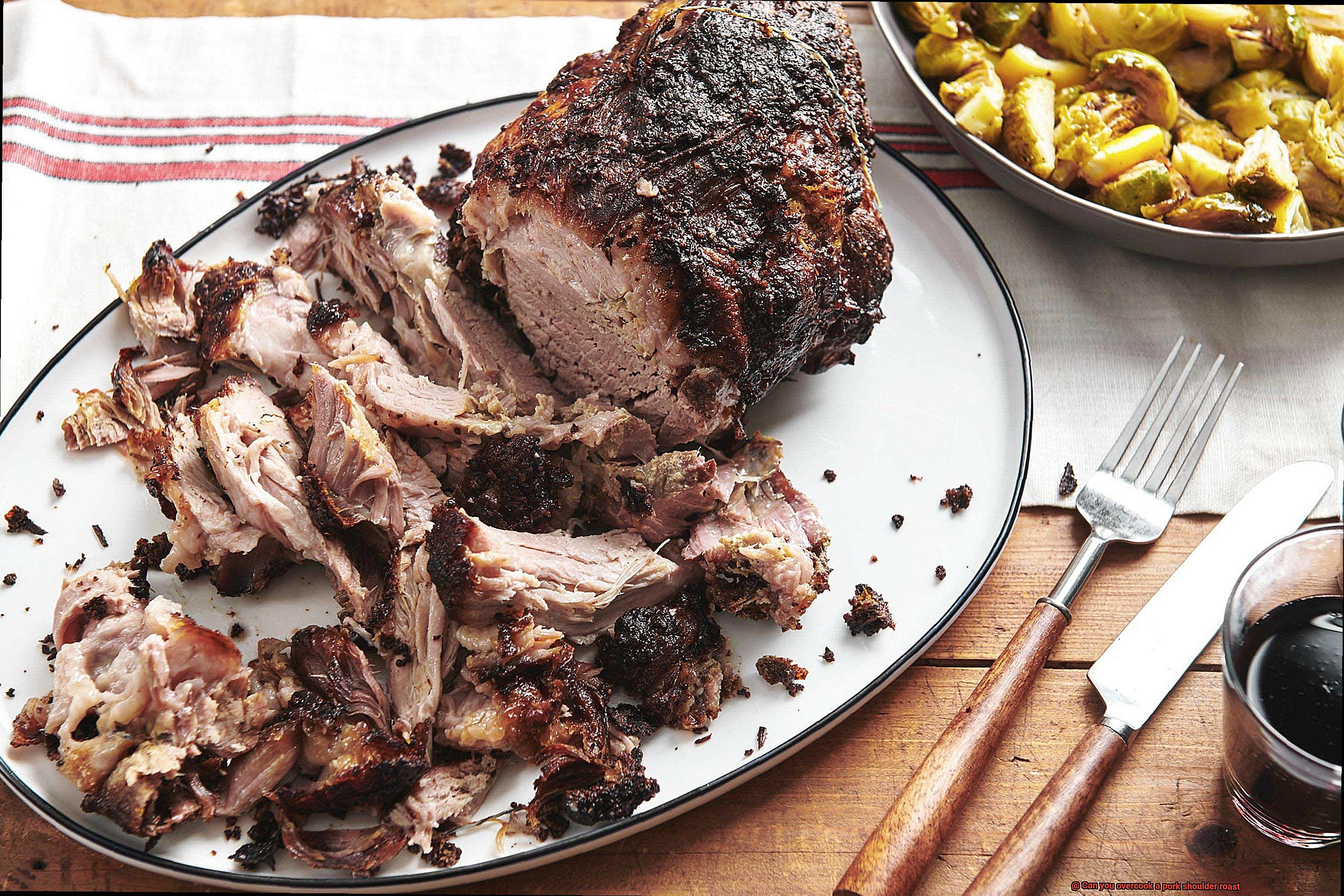
Slow cookers are an excellent way to cook pork shoulder roasts because they allow for long, slow cooking times that result in tender and juicy meat. Set your slow cooker on low heat and cook the meat for at least 8-10 hours. Adding some liquid such as broth or water to the cooking vessel can also keep the meat moist and prevent it from drying out.
Baste your pork shoulder roast
Basting your roast with its own juices or a marinade will help keep it moist and prevent it from drying out during cooking. You can baste your meat every hour or so while it is cooking, which will also add flavor to the meat.
Rest before carving
After your pork shoulder roast has finished cooking, let it rest for at least 15-20 minutes before carving. This will allow the juices to redistribute throughout the meat, resulting in a more flavorful and moist roast. Covering the meat with foil during this time can also help keep it warm.
Choose the right size and cut of pork shoulder roast
Choosing the right size and cut of meat is essential for preventing overcooking. A smaller roast weighing between 3-4 pounds is recommended for easier and more consistent cooking. Additionally, avoid opening the oven or slow-cooker too frequently during cooking, which can result in uneven cooking and overcooking.
How to Salvage an Overcooked Pork Shoulder Roast
Cooking a pork shoulder roast can be challenging, and overcooking it can result in a dry and tough meal. But don’t despair. Here are five ways to salvage an overcooked pork shoulder roast and turn it into a delicious meal.
Remove the roast from the heat source immediately
The first step is to remove the roast from the heat source as soon as possible. This will prevent the meat from drying out even further and becoming tougher.
Add moisture back into the meat
To add moisture back into the meat, try basting it with a flavorful liquid such as broth or apple juice. Cover the roast tightly with foil and place it back in the oven at a low temperature (around 250°F) for an hour or two. This slow cooking process will help the meat absorb the moisture and become tender again.
Slice or shred the meat
If your pork shoulder roast is still dry and tough, consider slicing it thinly against the grain or shredding it and using it in other dishes where dryness is not an issue. This can include pulled pork sandwiches, tacos, stir-fries, or casseroles.
Use a flavorful sauce or gravy
To mask any remaining dryness or toughness in the meat, serve it with a flavorful sauce or gravy. You can make a simple sauce using ingredients such as ketchup, mustard, vinegar, brown sugar, and spices.
Turn it into a breakfast skillet
If all else fails, turn your overcooked pork shoulder into a delicious breakfast skillet. Simply chop up the meat and sauté it with diced potatoes, onions, and peppers until everything is crispy and golden brown. Top with a fried egg for a hearty and satisfying meal.
It’s important to note that while these methods can help salvage an overcooked pork shoulder roast, prevention is always better than cure. To avoid overcooking in the first place, use a meat thermometer to ensure that the internal temperature of the roast reaches around 195°F to 205°F. Additionally, consider cooking the pork shoulder roast at a lower temperature for a longer period of time, as this can help ensure that the meat stays moist and tender.
Conclusion
In summary, cooking a succulent pork shoulder roast can be a challenging task. However, with the right techniques and tools, it can be achieved. Remember that overcooking this cut of meat can result in tough and dry meat that is unappetizing to eat.
Therefore, it’s crucial to use a meat thermometer to keep track of the internal temperature of your roast and avoid overcooking it. The ideal internal temperature for juicy pulled pork made from pork shoulder is between 195°F to 205°F (91°C to 96°C). Since cooking times and temperatures may vary depending on the size of your pork shoulder and cooking method used, monitoring it closely is essential.
To prevent overcooking, you may want to consider using a slow cooker or sous vide machine, marinating or brining your meat before cooking, or basting your roast with its own juices or marinade. Choosing the appropriate size and cut of meat is also crucial for preventing overcooking.
However, if you do happen to overcook your pork shoulder roast by mistake, don’t worry.
There are ways to revive it by adding moisture back into the meat, slicing or shredding it for other dishes, using flavorful sauces or gravies, or transforming it into a breakfast skillet.

